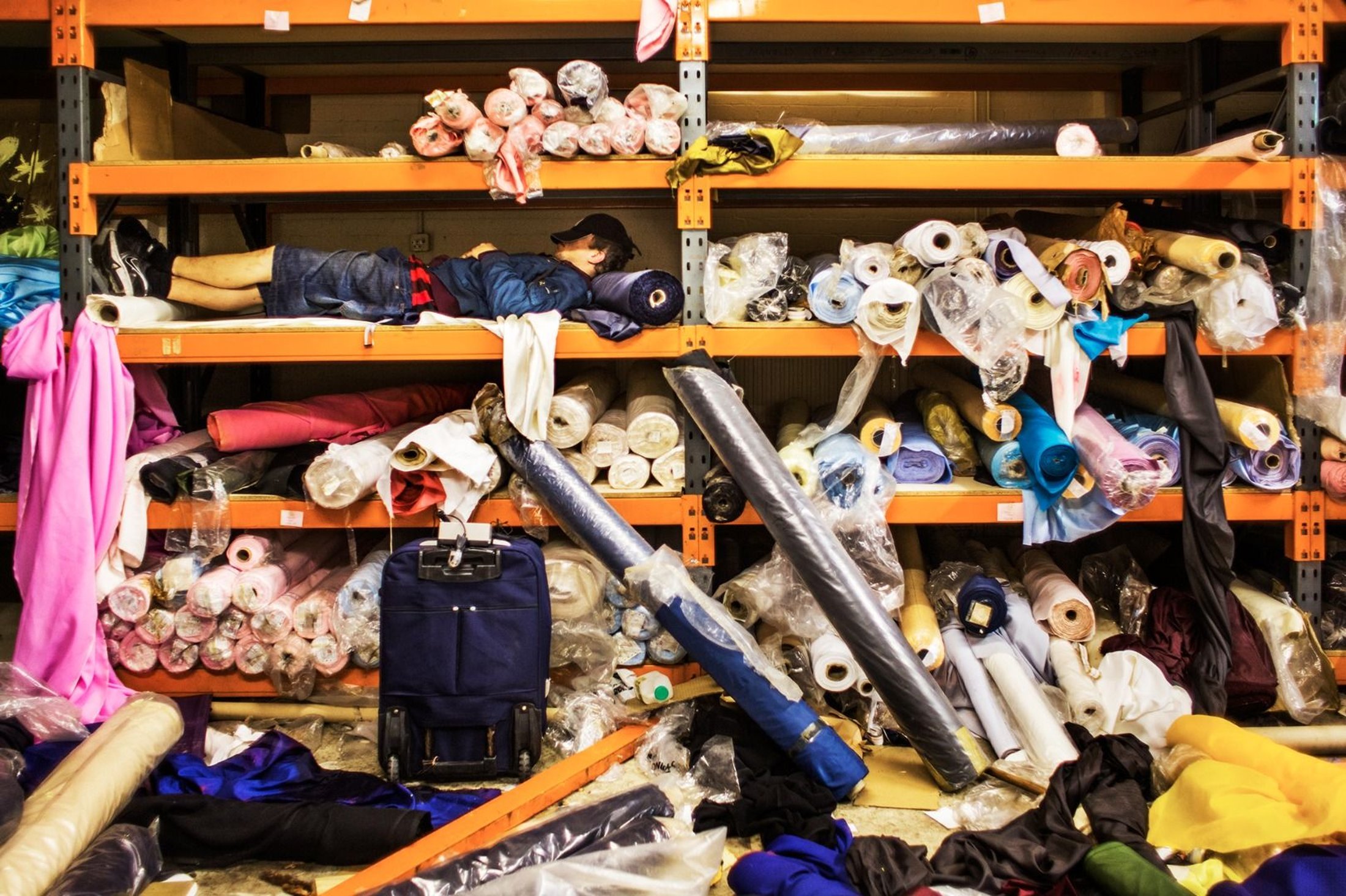The Castle. A resident relaxes after a rave in a squat called "The Castle." Once used as a five-story office block, the building started a new life as an accommodation for 30 residents. That number rose up to 100 within three months of the opening of the squat. May 2013, London, United Kingdom. © Corinna Kern
With its sustained influx of new residents and guests, the Castle had become a crossing point for a variety of individuals individuals—too many to get to know in person but more than enough for interesting encounters and small adventures. © Corinna Kern
A resident washes his hair in the communal washrooms. Squatting is often a conscious choice of an alternative and communal way of living. On the 1st of September 2012, the new section 144 of the Legal Aid Sentencing and Punishment of Offenders Bill (LASPO) came into force rendering squatting in residential buildings a criminal offense. Hence, squatting can legally only be attempted in commercial premises—with the result that squatters often occupy unusual premises that contradict the conventional idea of home. © Corinna Kern
A room in "The Castle" after a rave. The Castle's beauty and vastness lent it its name. The wide hallways, high ceilings and large window fronts gave the space a magnificent appearance when freshly occupied. This veneer was soon lost through the multitude of human encounters that had left behind their signatures on the walls, through paintings and writings. The space had gained its own vibe, a result of the people and their lifestyle. © Corinna Kern
The Fabric Storehouse. Fabrics are used to section rooms in a squatted fabric storehouse. Hundreds of abandoned fabric rolls become a means of creativity. Private spheres emerge by finding a new purpose for bed sheets and pillows. Decorations for the ceilings and walls emerge. Little tents are set up everywhere. June 2013, London, United Kingdom. © Corinna Kern
A girl draws on the sleeping area in her new home, a squatted fabric storehouse occupied by more than 40 people. © Corinna Kern
A resident smokes a cigarette in his home, the Fabrich Storehouse. © Corinna Kern
A squatter takes a rest on shelves used to store fabric rolls. © Corinna Kern
A couple relaxes in their new home. © Corinna Kern
The fabric storehouse as it was a few days before its eviction. The squat was once home to more than 40 people © Corinna Kern
Garden Centre. A resident of the "Garden Centre," a squatted plant nursery, sits in the outside area. In this calm squat, there lives a small group of 12 residents. Among the group there are two pregnant women with their partners. July 2013, London, United Kingdom. © Corinna Kern
A girl paints a fence in the Garden Centre. Building practicalities and repairing existing structures is common in squats, adding to the sense of home. The garden centre is intended to house vegetables and spices so that it can become a small, self-sustaining community. © Corinna Kern
A couple watches videos in their home. The former greenhouse of the plant nursery has now been converted into a vast living-room and kitchen. This is one of two couples that reside here while expecting a child, which adds to the sense of settling down, to the feel of a squat that could become an arrival point rather than just a step in life. © Corinna Kern
A greenhouse with abandoned objects. The main greenhouse is used as the living room for the entire community. © Corinna Kern
A resident of the Garden Centre makes music with his squatmates. © Corinna Kern
Kentish Town. Two residents check a freshly squatted building, formerly used as design studios. June 2013, London, United Kingdom. © Corinna Kern
A room made out of fabrics in the "Kentish-Town-Squat," a building that was formerly used as design studios. Private spaces can be rare in squats since several people usually share one room. The Kentish-Town Squat became home to about 30 people and two dogs. © Corinna Kern
A resident lies in her room made from fabrics. © Corinna Kern
Residents of the squat take a break while sitting on their "skipped" furniture, found on the streets of London. "Skipping" (or dumpster diving) of food and furniture is common amongst squatters, contributing to a lifestyle whose principles oppose consumerism. © Corinna Kern
The communal lifestyle often creates strong bonds between the residents and a family feeling. © Corinna Kern
A girl paints in her new home while her friend and squatmate joke around with her. Many residents are artistically oriented and have their own little corner dedicated for the creation of their artworks. © Corinna Kern
A visitor enjoys the view from the rooftop of the building. The squatting scene is large and interconnected in London; squatters often visit and support each other. For example at eviction resistances, you'll find residents from many different squats banded together. © Corinna Kern
After a communal dinner with the residents, a couple enjoys the summer's night on the rooftop of their home. © Corinna Kern



